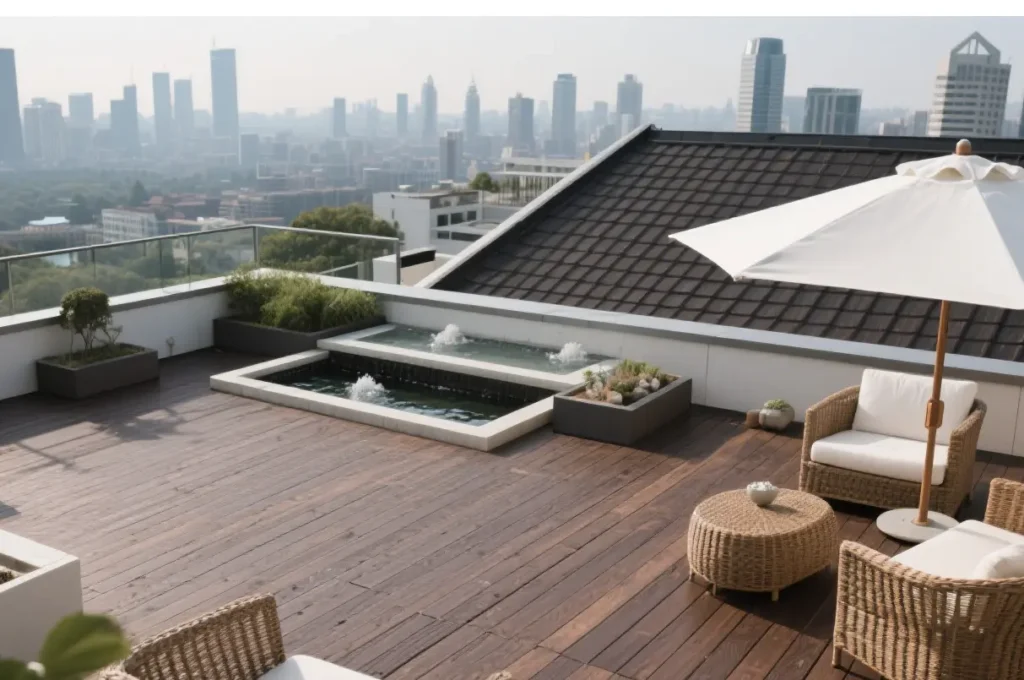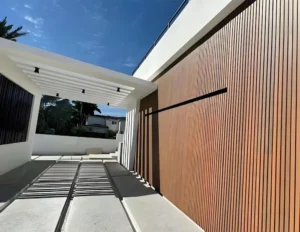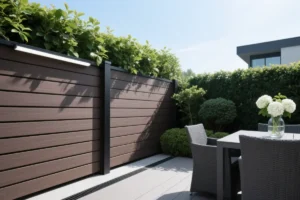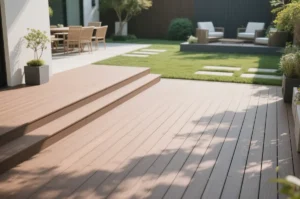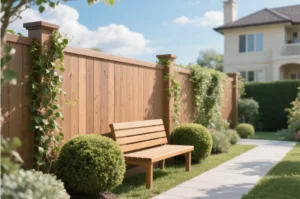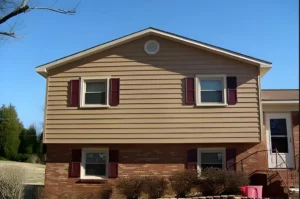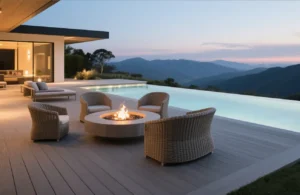When it comes to outdoor flooring, homeowners and builders often face the big question: Should I choose WPC or wood decking? While traditional timber decks have a classic appeal, modern WPC decking offers a host of advantages in terms of durability, maintenance, and sustainability.
In this guide, we’ll compare WPC vs wood decking side by side—exploring key differences in material, performance, cost, longevity, and environmental impact. By the end, you’ll know which material is right for your patio, backyard, or garden project.
✅ What Is WPC Decking?
WPC (Wood-Plastic Composite) decking is a modern outdoor flooring material made from a blend of wood fibers and recycled plastic. The result is a composite decking board that mimics the look of natural wood but performs like a high-tech material.
Common features include:
- Waterproof and weather-resistant
- UV-stable and fade-resistant
- Low maintenance (no sealing or staining)
- Available in wood grain textures and multiple colors
WPC is a popular choice for eco-friendly decking solutions, especially for patios, pool areas, and rooftop terraces.
✅ What Is Wood Decking?
Wood decking refers to traditional timber planks, typically made from:
- Softwood: like pine or cedar
- Hardwood: like ipe, teak, or redwood
- Pressure-treated lumber: chemically treated to resist rot and insects
Wood is valued for its natural beauty, warmth, and timeless appearance. However, it requires regular maintenance and is more vulnerable to weather damage.
🔍 WPC vs Wood Decking: Side-by-Side Comparison
1. Appearance & Texture
| Feature | WPC Decking | Wood Decking |
|---|---|---|
| Visual | Consistent, modern look | Natural wood grain, knots, and variation |
| Finishes | Embossed, grooved, or matte | Can be sanded or stained |
| Color options | Wide range, fade-resistant | Natural tones, may fade over time |
🟩 Verdict: Wood has natural charm; WPC offers more design consistency and color stability.
2. Durability & Lifespan
- WPC boards resist cracking, warping, termites, and rot. They’re ideal for humid or coastal climates.
- Wood decking may last long if maintained properly, but is prone to splintering, mold, and decay.
🟩 WPC lasts 15–25 years with minimal upkeep, while most softwood decks last 5–10 years without regular treatment.
3. Maintenance Requirements
| Task | WPC Decking | Wood Decking |
|---|---|---|
| Staining/Painting | ❌ Not required | ✅ Required every 1–2 years |
| Cleaning | Easy (mild soap & water) | Deep cleaning needed |
| Repairs | Rare | Frequent (nail pops, rot, splinters) |
🟩 Winner: WPC is a low maintenance decking option.
4. Installation Process
- Both WPC and wood decking can be installed using a sub-frame.
- WPC often features hidden fasteners or interlocking systems.
- Wood decking requires nails or screws and more precise cutting.
🟩 DIY homeowners may find WPC easier and faster to install, with a cleaner finish.
5. Environmental Impact
- WPC is made from recycled plastic and reclaimed wood fibers. It’s considered a green decking material.
- Wood decking contributes to deforestation unless sustainably sourced.
🟩 WPC is more eco-friendly in terms of materials and long-term performance. Look for FSC-certified wood if you choose timber.
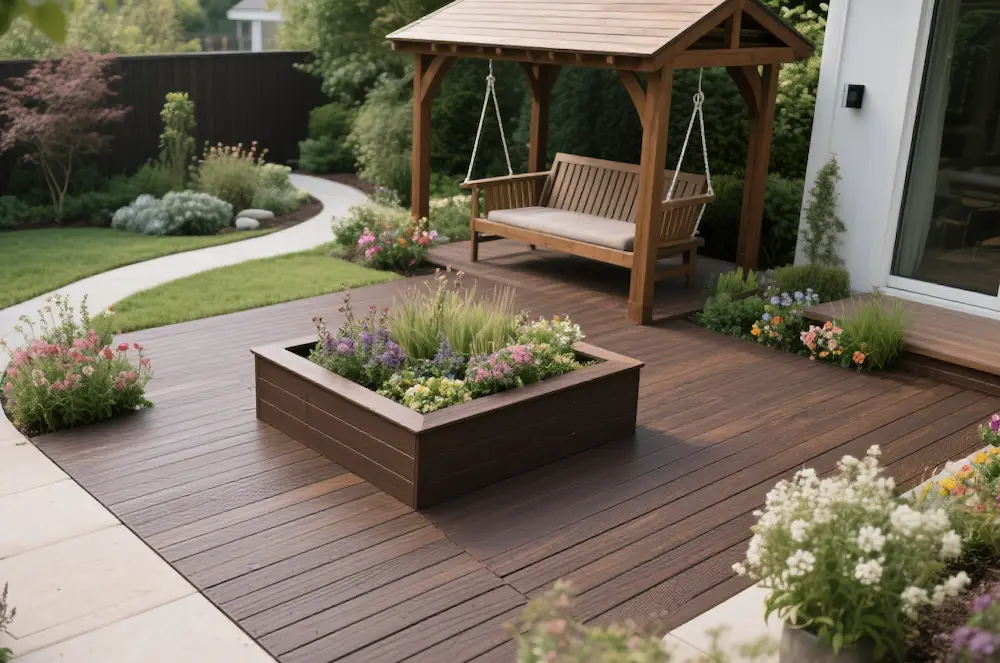
6. Cost Comparison
| Cost Factor | WPC Decking | Wood Decking |
|---|---|---|
| Upfront Price | Higher | Lower (initially) |
| Long-Term Value | Better (no refinishing) | Higher maintenance cost |
🟩 While WPC may cost 20–30% more up front, it saves money on labor and maintenance over time.
📈 Quick Summary Table
| Criteria | WPC | Wood |
|---|---|---|
| Durability | ✅ | ❌ |
| Maintenance | ✅ | ❌ |
| Water Resistance | ✅ | ❌ |
| Eco-Friendly | ✅ | 🔸 (if FSC certified) |
| Cost Efficiency | ✅ (long-term) | ✅ (short-term) |
| DIY-Friendly | ✅ | 🔸 |
🏡 Best Use Cases
| Application | Recommended Material |
|---|---|
| Poolside decking | WPC (waterproof, anti-slip) |
| Rustic garden deck | Wood (natural texture) |
| Rooftop terrace | WPC (lightweight, UV-stable) |
| Rental property | WPC (low maintenance) |
| High-end resort | Hardwood or co-extruded WPC |
❓ Frequently Asked Questions
Q: Does WPC decking get hot in summer?
A: Yes, like most materials, it can warm up in direct sunlight. However, light-colored WPC boards retain less heat than darker ones.
Q: Can WPC decking be painted or stained?
A: Not recommended. WPC comes pre-finished and doesn’t absorb stains or paint like wood.
Q: Is WPC decking slippery when wet?
A: Most WPC boards are slip-resistant thanks to grooved or embossed surfaces. Choose anti-slip rated products for wet areas.
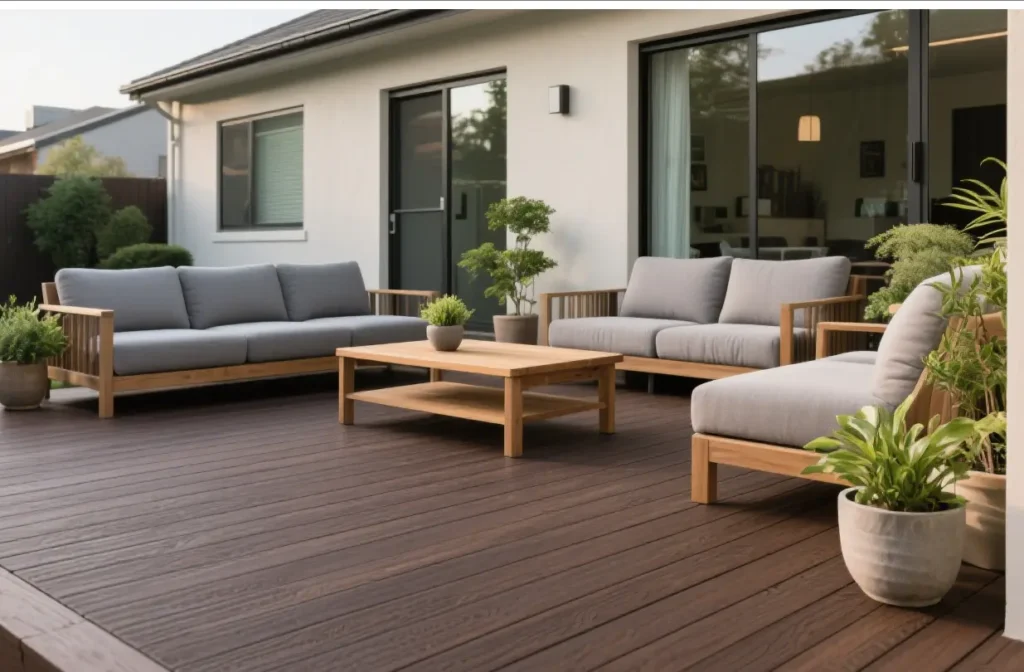
🔚 Conclusion: Which Decking Material Should You Choose?
If you’re looking for a low-maintenance, long-lasting, and eco-friendly outdoor flooring, WPC decking is a smart investment. It’s especially ideal for:
- Busy homeowners
- Commercial or public spaces
- Humid, coastal, or rainy climates
On the other hand, wood decking may appeal to those who:
- Prefer the feel of natural timber
- Don’t mind regular maintenance
- Want a more rustic, traditional look
Ultimately, your decision should depend on your budget, aesthetic preferences, and maintenance expectations.

